Tips for Preparing for HomeBirth
- November 6, 2022
- Last Updated: March 21, 2024
- 2 Comments
- Pregnancy & Postpartum
As we near the final days until we meet our baby, I thought it would be helpful to share how we’re preparing for homebirth the second time around.
While I’m no expert (we switched from a hospital birth to the idea of a homebirth at 36 weeks during my second pregnancy), I feel much more confident this third time around.
As an Amazon Associate, I may earn from qualifying purchases. You can read more here on our Disclaimer and Privacy Page.
I never thought I was “crunchy” enough to do a homebirth, especially at 38 weeks pregnant with my first and even second.
But then, 2020 and the pandemic came, and we found ourselves living in a new state with zero family around, and going to the hospital where we may not be able to have a support person sounded terrible.
Also, who was going to watch my two year old at the time?
Our first birth led us to learn how to prepare for a home birth at 36 weeks when switching providers.
Now, the second time around, I’m much more educated and prepared for preparing for home birth and I already have my postpartum recovery kit all ready!
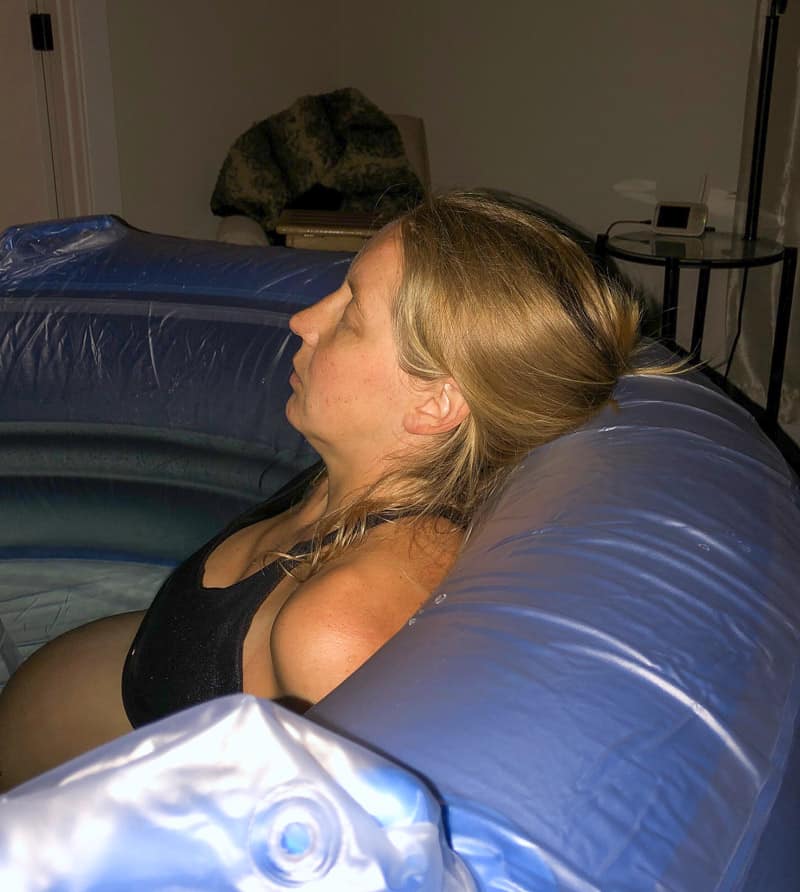
Preparing for HomeBirth
We knew from the start that we would prepare for a home birth again as soon as we found out we were pregnant.
Part of this was the preparation from our previous VBAC Home birth experience.
We had taken a Bradley Childbirth class and really gelled with that way of laboring and prepared us for a natural childbirth.
We trusted in our awesome midwife group, had a doula, and the firstime experience was so amazing and memorable. So, we signed up again.
My first homebirth really gave me the empowerment and confidence I needed with a VBAC home birth after my first traumatic birth experience that ended in an unplanned C-Section.
So, since my first birth, I’ve spent a lot of time learning and educating myself. I listened to several birth stories and loved reading home birth stories with pictures to know what to expect.
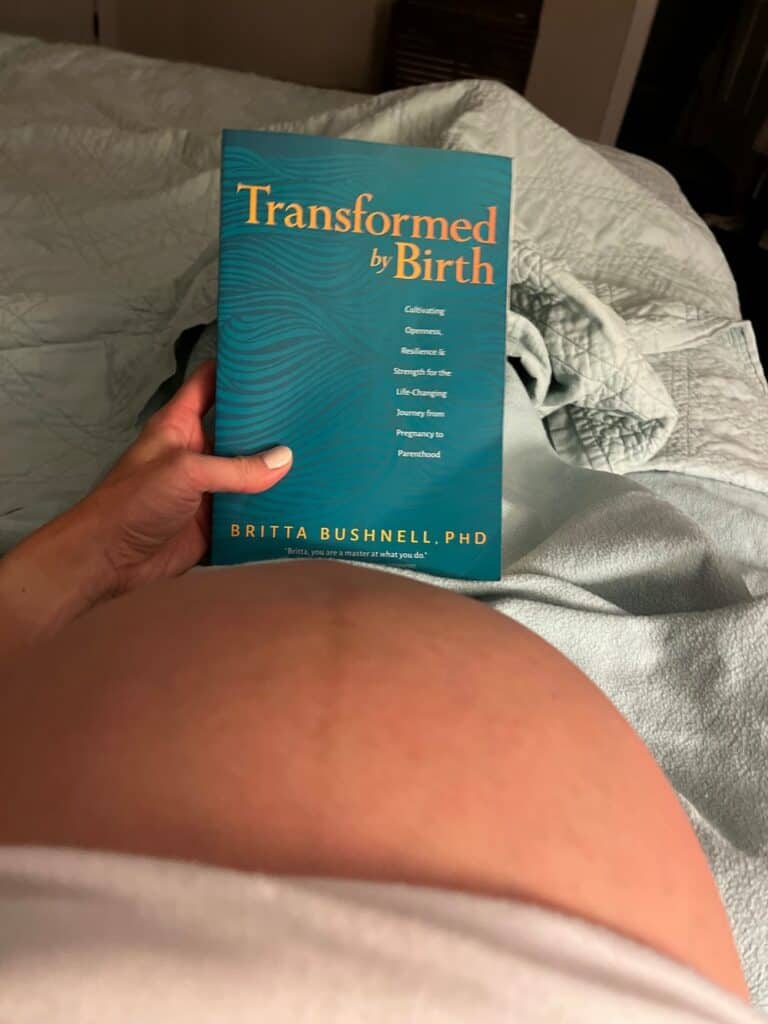
In your initial preparations, think about some of these things and factors.
Obviously, some will be more important to consider for certain families, based on where they live and their family dynamics.
- Cost – I think most are in the $4-5,000 range though it may depend on your location. Sometimes insurance may reimburse it – they did for our first!
- Location – Where will you homebirth? What room in your house? In a birthing tub?
- Childcare – Who will care for your other children (if necessary), or do you want them present?
- Who’s present? Do you want a doula, birth photographer or videographer? Do you want family there, or just keep it small and intimate? After watching so many birth stories on youtube, I really started thinking about documenting ours although at first, I was against it.
- Support after delivery– This one is essential. Definitely try to find a postpartum doula, family/friends, set up a meal train, invest in a postpartum recovery kit, etc.

Here are some resources for finding midwifes, doulas or birth classes:
- Try calling the hospital you want to deliver at and see what they say.
- Ask other moms in Facebook groups, exercise groups/classes, mom groups, etc.
- Ask your chiropractor (Webster certified chiropractors are knowledgable about birth and pregnancy and may have some referrals)
- Get recommendations from a pelvic floor physical therapist
- Join the VBAC Link or Happy Homebirth Facebook groups and you can ask many of the thousands of members for recommendations in your area.
- You also always search, “home birth midwives near me,” and see who comes up in your area.
The best thing you can do is ask people and be persistent!
How to Prepare For a Home Birth: What to Do
There are many different ways to prepare for a home birth, including physically, mentally and emotionally. I’ll share what I did for each category, in hopes that it helps you plan as well.
Of course, some people feel much more prepared with more information, while others prefer less. So, follow your intuition!
There are several birthing courses available that can help provide information.
We loved the Bradley Birth Class, but I’ve also heard great things about this natural childbirth course if you want something online from the comfort of home.
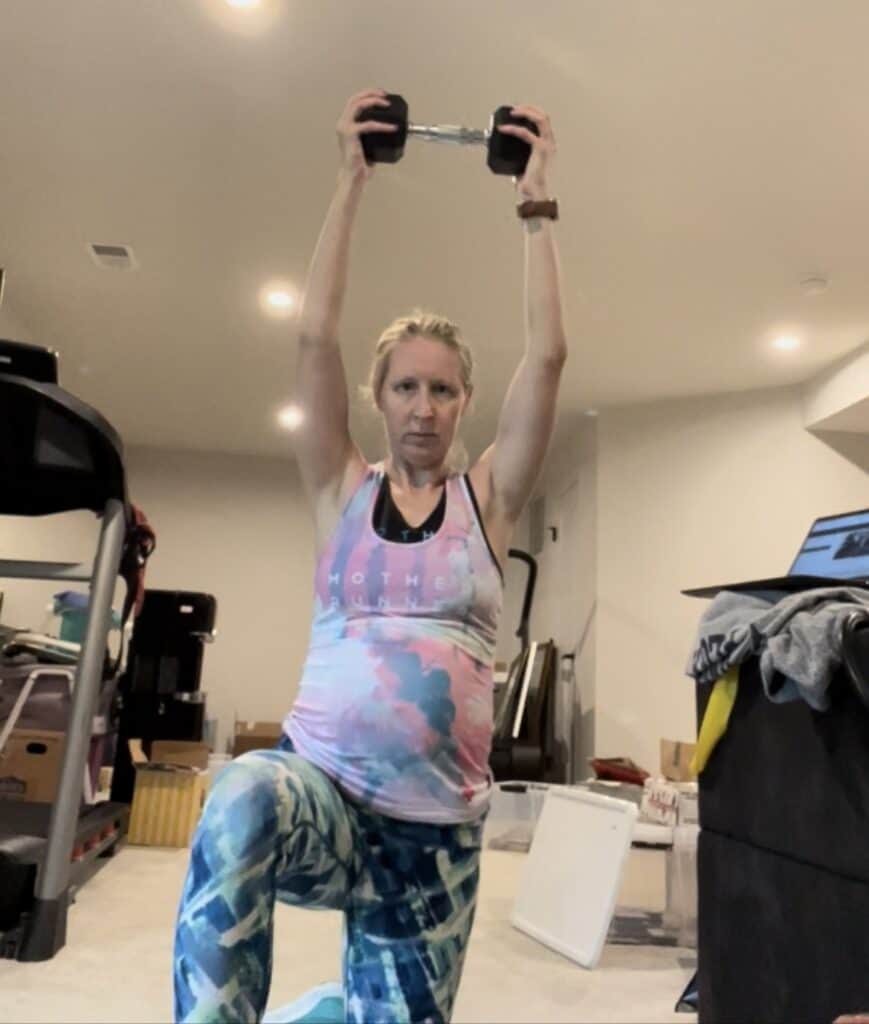
Physical Preparation
While you may think of physical preparation for a homebirth as things you should do to exercise or get baby in the correct position, that’s definitely some of it. Here are some other aspects to consider.
- Exercise – While some low impact exercises are great for pregnancy, some women do and feel great with more impactful movements, like running, strength training, HIIT classes, etc. I did a combination of everything, though my running really decreased after the second trimester. Walking, yoga, and strength work were my best friends during pregnancy and I think they really made a HUGE difference in my endurance, strength and even mental mindset.
- Positioning and Stretches – The stretches/exercises I did daily included squats, windmills, cat/cow breaths, and deep diaphragmatic breathing. I also tried not to recline as I entered my third trimester, and spent a lot of time sitting on the front of my sitz bones. Spinning babies has a great flashlight test that shares why reclining can be harmful for baby’s positioning.
- Establish your care team – Choose your midwives and doula if using one. Make sure to pick a team you trust and feel confident with! I feel great about my care team, and know that they can solve many of the challenges that may come up during birth. I also saw the chiropractor and pelvic floor physical therapist regularly, and got massages often. While the appointments add up quickly, it was a form of self-care for me and very important to me.
- Purchase your supplies – See the list below for things needed for a home birth. Yours may vary depending on the area you live in, what you already have, your midwives, etc.
- Your diet – While the first trimester is often a wash with nausea, I tried to focus on eating consistently and getting nutrient dense foods in when I could, which started with breakfast! And of course taking a quality prenatal vitamin (I love Ritual)! I focused alot on choline for my health and the growing baby (ate lots and lots of eggs!), ample protein, hydration and eating enough. These are my favorite healthy breakfast ideas for pregnancy and my favorite electrolyte drinks for pregnancy.
- Consider other resources – Purchasing a spinning babies class, or even consider seeing a chiropractor, pelvic floor therapist, acupuncturist, etc., can all help with aches and pains during pregnancy. Many of these options can also help baby stay, or move to, an optimal position for labor and birth.

Towards the latter months, I also focused alot of meal prep for baby and postpartum freezer meals to help me in the postpartum time.
I also started eating 6 dates/day, and drinking 1-2 cups of red raspberry leaf too at 36 weeks. Evidence is not consistent for either of these, but they can’t hurt.

Mental Preparation
I think some of these overlap with the physical preparation as well.
- Know the process of labor and birth – Educate yourself about the process of birth, so you know what happens and what to expect. Whether you listen to podcasts, read books, watch birth videos, take a birth class, or a combination of these things, take in information. Know what is too much for you.
- Watch Births – I loved watching positive birth stories to get my mind in the right place and normalize what I planned on doing. Of course, it’s important to know that unexpected situations can arise, I wanted to normalize this process as much as possible. I loved watching you tube home birth videos!
- Figure out where you stand mentally – In order to tackle mental preparation, see where you’re at. Do you fear birth? What are you scared of? What have been your past experiences with births, like in movies, hearing others stories’ or even your own past experiences? While education is great, you also want to be in a good headspace mentally. For me, this came naturally after assembling a care team I trusted. There are meditations you can do, journaling prompts, books, hypobirthing exercises, etc. You want to process any past births and be in a place for acceptance for a new birth. This was big for me, as someone who had a traumatic first-time hospital experience ending in an (unnecessary) C-section.
I was intimidated about having a natural birth, with no access to an epidural. But, proper preparation and knowledge, a supportive care team and home environment sealed the deal for me.
SARAH SCHLICHTER, MPH, RDN

Emotional Preparation
Having two other girls, I really wanted to soak up time with them together and individually before we welcomed a new baby.
I tried to set aside 1-1 time throughout the week with them. This may mean just doing a shower or tub, cooking with them, taking them somewhere, or going for walks.
I also listened to several podcasts. The podcasts helped me relate with other women or just learn more about what to expect, their emotions, how raw it can be, etc. Definitely a game changer for me.
Some of my favorite homebirth podcasts were Doing it at Home (listen to my episode on there with my second homebirth!), My Happy HomeBirth, VBAC Link (not exclusively home births, but VBAC stories)

Home Birth Supply List (Things Needed For a Home Birth)
When planning how to prepare for a home birth, you’ll need to keep some things on hand at home.
Your midwives will probably have a list for you, but here are some of the things we’ve used and kept on hand for our home birth supply list:
- Birth Kit – they usually give this to you around 36 weeks. Mine had some info about what to do if baby came before the midwives did, instant cold packs, some things for the baby right after the birth, herbs and teas, etc.
- Birth Pool (if using) – Your midwives likely have one for you to use. Make sure to have a disposable liner for it!
- Flash light (extra batteries are helpful)
- Thermometer – they may be taking your temperature, and definitely have one for baby!
- Lots of towels and blankets – we just bought new sets and downgraded our old sets to use for birth.
- Ziploc gallon bags
- Snacks/drinks for labor – love these honey packets and pregnancy electrolyte drinks! Coconut popsicles can also be great. Think about your marathon nutrition and implement that – you are preparing for a long endurance event!
- Space heater (if necessary for afterbirth)
- Fitted sheets, extra pillows, pillowcases, waterproof mattress cover, shower curtain – there is a trick to making your bed and using a shower liner between your pairs of sheets, so you can just take off the dirty ones after birth and sleep in clean ones. Genius!
- Ammonia, peroxide, bleach – our midwives cleaned everything up after the birth so you’d have no idea there was anything that even happened.
- Birth Ball – this is so helpful for movements and exercises to do while laboring. I also used this birth ball chair when working at my desk.
- Peanut ball – I used this when laboring on my side, after learning about it in our bradley course! Definitely not a necessity, but may be helpful if your midwives don’t have one.
- TENS unit – Many women swear by these to help with pain/symptom management. I didn’t use one for my first, but for my second, I did.
- Rebozo – We learned about the Rebozo through our Bradley course, and used it often for belly sifting and labor coping.

Remember, if you’re using midwives, they will have many of the medical supplies.
You’ll also want these things for after the birth. I was surprised at how much I blend, but much will be dependent on your birth, time you pushed, how baby was positioned, how much blood you lost, etc.
- heated/cooling pads (I made a bunch of DIY padsicles)
- peri bottle
- maxi pads or overnight diapers for postpartum bleeding
- sitz baths
- tucks cooling pads
- dermoplast – I loved this stuff for the cooling sensation and it seemed to be my favorite product that helped numb the pain.
- possible iron supplement – I would NOT take this without advice from your care provider. Iron supplements when not needed can be dangerous.
Tips for Laboring At Home for Home Birth
Many women have asked for my tips for laboring at home for a home birth.
Honestly, being at home is the best. It’s so much more familiar and comfortable than a sterile, cold, hospital environment. At least that’s my personal opinion.
I loved hanging affirmations around my room. I listened to much of them through journaling prompts, books, hypobirthing exercises, etc.
It was amazing and empowering to see them in color when labeling.

I also created a music playlist. This will be so individual for the person, but if you like music, think about what you’d like.
At first I thought pump up music, but I actually preferred slower, more meditative music.
Make sure to eat and drink as needed when laboring – believe me, you WILL need the energy. Popsicles, lemonade, electrolyte/sugar drinks, snack bars, gummies, honey packets were some of what I used, even if I didn’t *want* anything.
In terms of positions, I loved using my birth ball. I loved laying against it or even bouncing on it. The peanut ball was also fantastic and is easier to use when side lying.
The rebozo was also so helpful for some of the labor techniques.
I really tried to focus on the breathing and letting go, rather than tensing up. Tensing up leads to fear, which leads to more pain, so being loose and relaxed is 100% the way to go.
I’ll be back soon to share my second homebirth story.
Overall, having two homebirths is something I will always treasure and remember. It is so empowering to get to birth in an environment you are comfortable in, with the care team you want, and in a way you desire.
I wish you the best of luck!
Other birth posts:
Support Bucket List Tummy









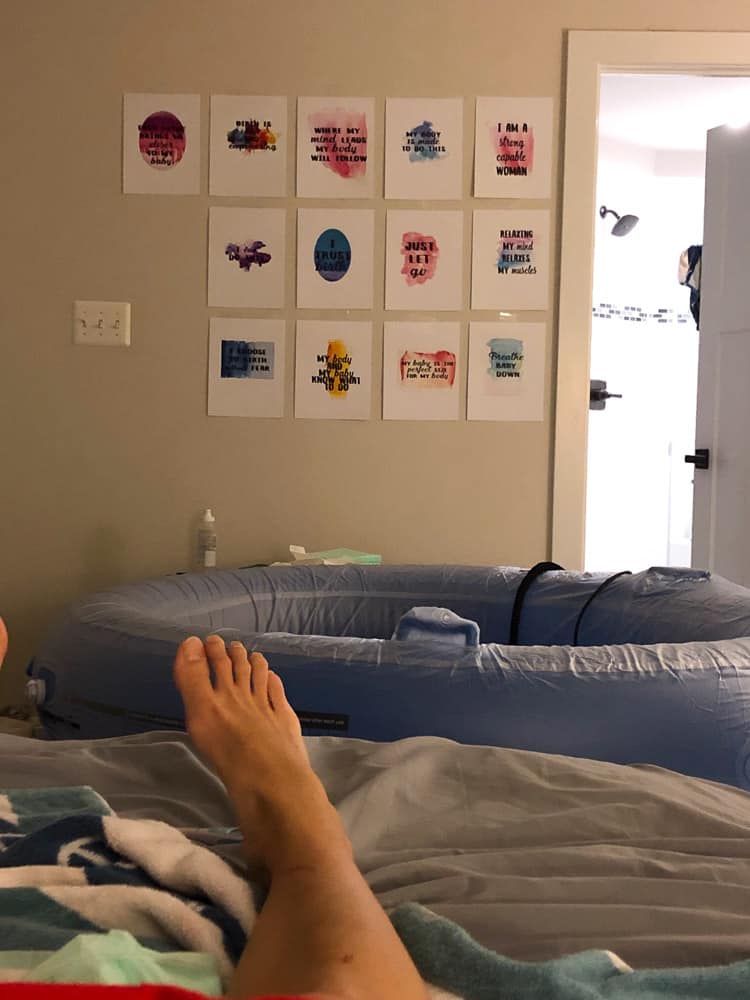


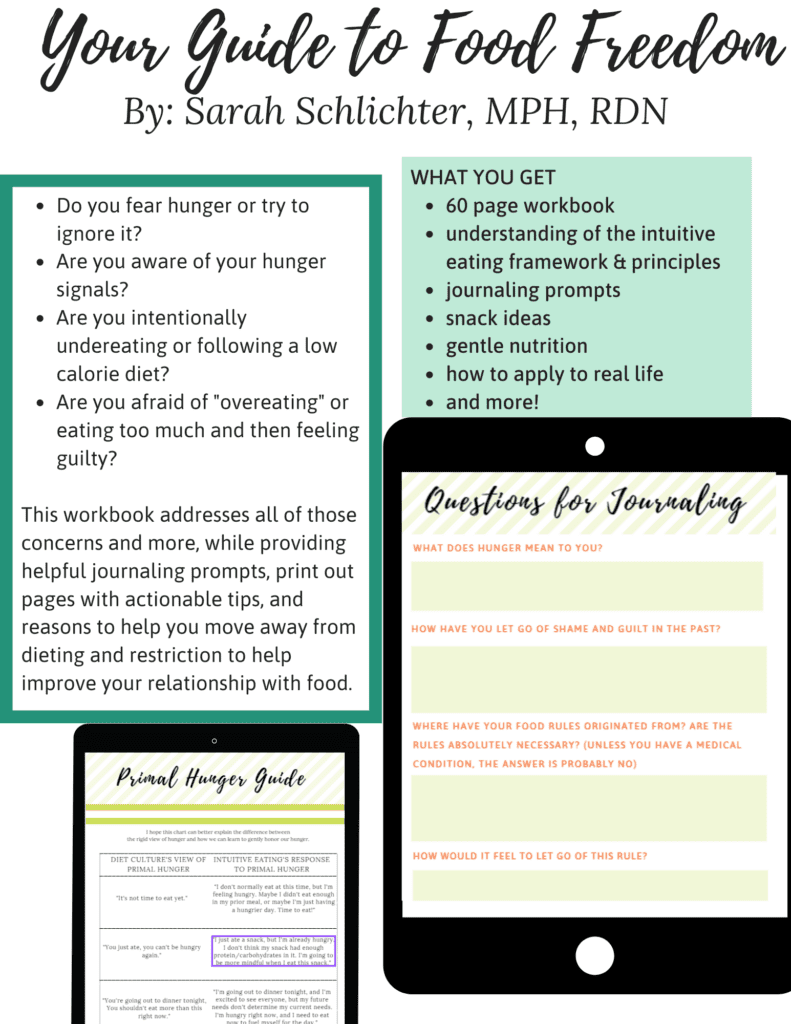












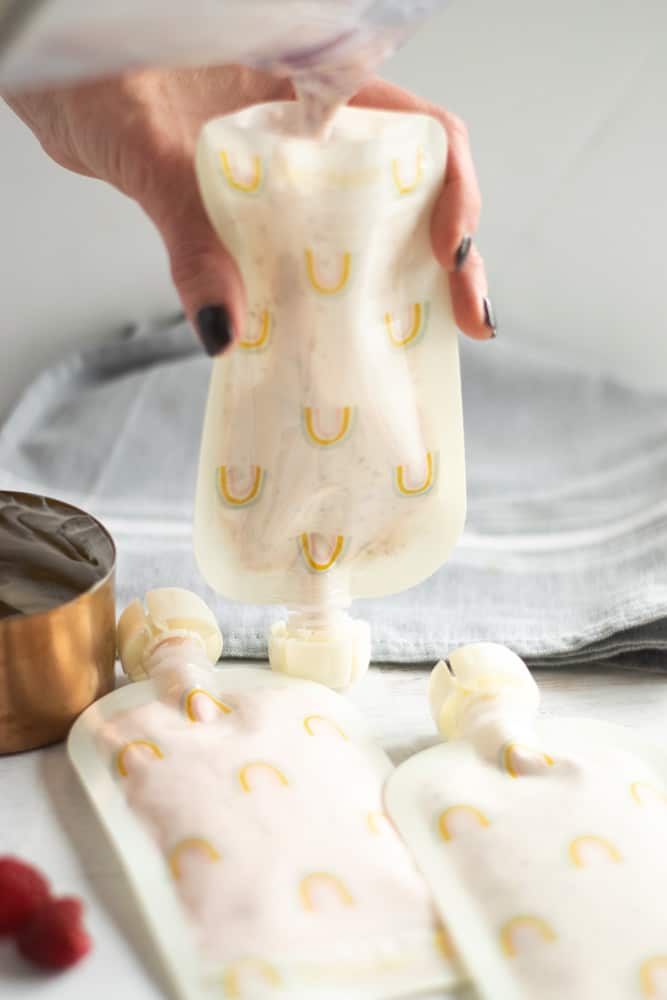


Like This Content?
Support Bucket List TummyThis was so helpful! We just found out we are pregnant and we are thinking about the idea of having a home birth. Some of our relatives like my in-laws will most likely be judgemental but I just have to trust whats’ best for us and our baby! I think everything you said is amazing, especially having the words of encouragement on the wall. I think I’m also going to schedule a carpet cleaning a month before my due date just tp mak sure everything is ready to go and clean!
This is the Most informative post I have ever seen – Thank you, Sarah!
This should be shared with any woman who is pregnant or may be in the future, Awesome!